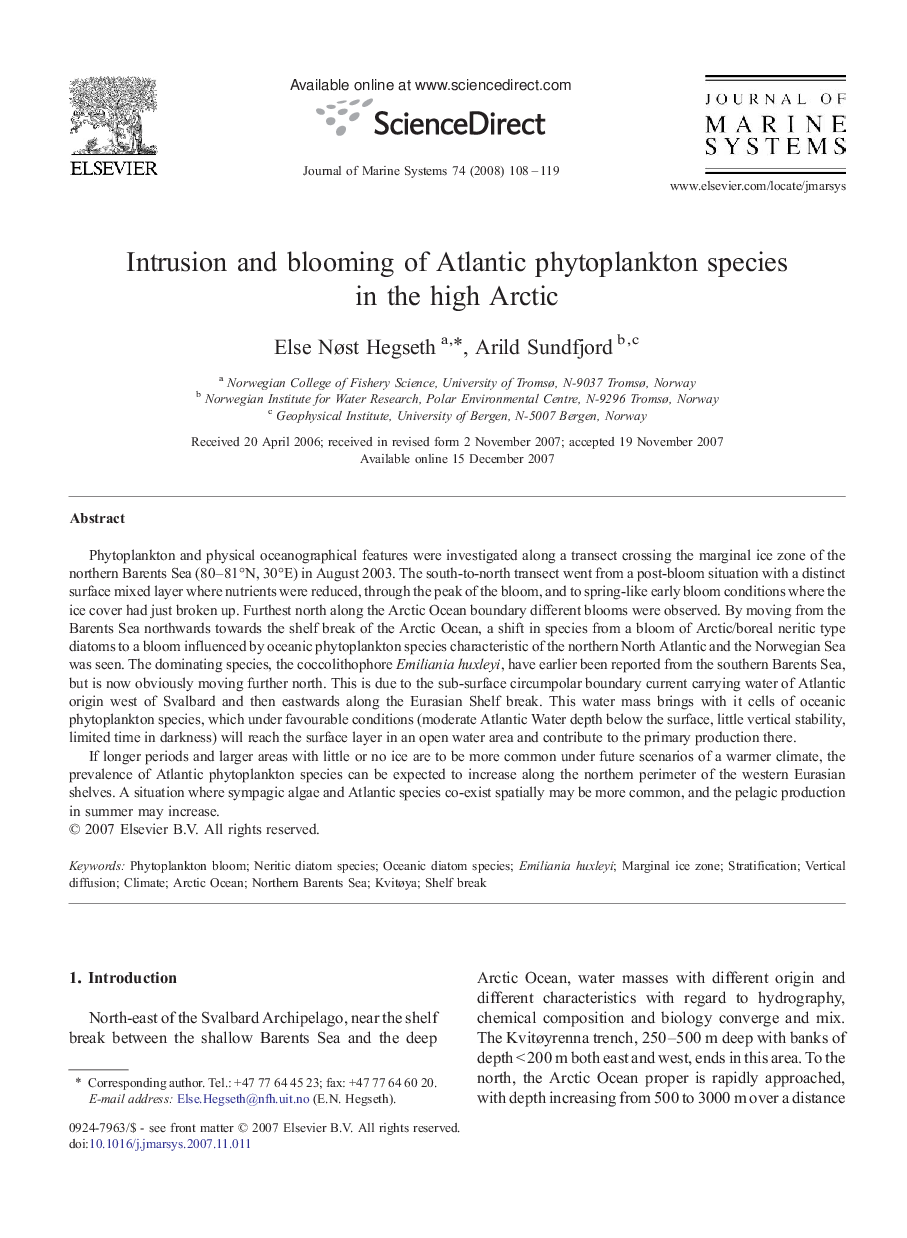| کد مقاله | کد نشریه | سال انتشار | مقاله انگلیسی | نسخه تمام متن |
|---|---|---|---|---|
| 4548991 | 1627343 | 2008 | 12 صفحه PDF | دانلود رایگان |

Phytoplankton and physical oceanographical features were investigated along a transect crossing the marginal ice zone of the northern Barents Sea (80–81°N, 30°E) in August 2003. The south-to-north transect went from a post-bloom situation with a distinct surface mixed layer where nutrients were reduced, through the peak of the bloom, and to spring-like early bloom conditions where the ice cover had just broken up. Furthest north along the Arctic Ocean boundary different blooms were observed. By moving from the Barents Sea northwards towards the shelf break of the Arctic Ocean, a shift in species from a bloom of Arctic/boreal neritic type diatoms to a bloom influenced by oceanic phytoplankton species characteristic of the northern North Atlantic and the Norwegian Sea was seen. The dominating species, the coccolithophore Emiliania huxleyi, have earlier been reported from the southern Barents Sea, but is now obviously moving further north. This is due to the sub-surface circumpolar boundary current carrying water of Atlantic origin west of Svalbard and then eastwards along the Eurasian Shelf break. This water mass brings with it cells of oceanic phytoplankton species, which under favourable conditions (moderate Atlantic Water depth below the surface, little vertical stability, limited time in darkness) will reach the surface layer in an open water area and contribute to the primary production there.If longer periods and larger areas with little or no ice are to be more common under future scenarios of a warmer climate, the prevalence of Atlantic phytoplankton species can be expected to increase along the northern perimeter of the western Eurasian shelves. A situation where sympagic algae and Atlantic species co-exist spatially may be more common, and the pelagic production in summer may increase.
Journal: Journal of Marine Systems - Volume 74, Issues 1–2, November 2008, Pages 108–119